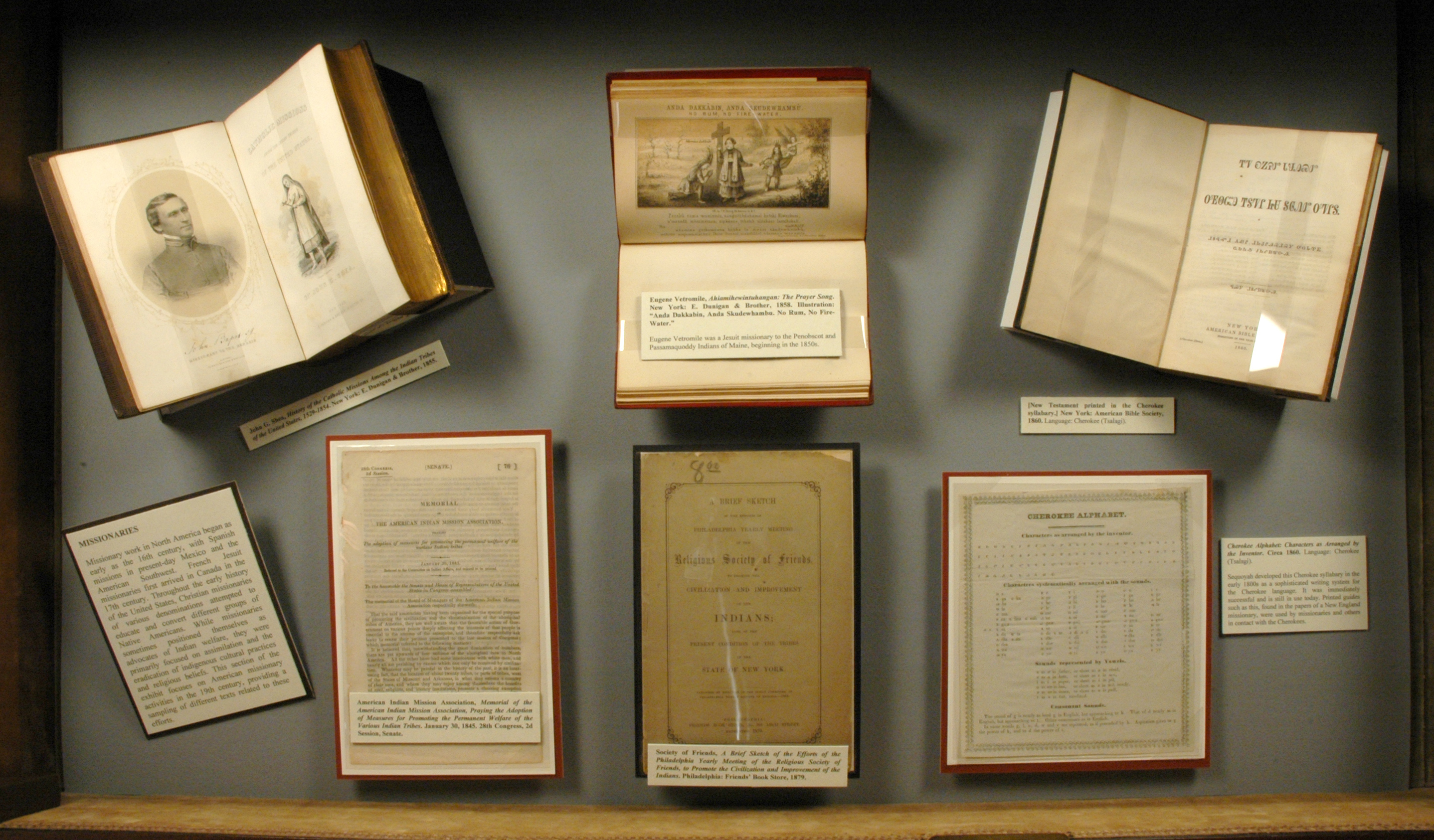Case 13: Missionaries
Contents
Case 1: Early Encounters - Before 1600
Case 2: Early Encounters - Samuel de Champlain
Case 3: Early Encounters - Early British and Native American Interactions
Case 4: William Penn's Treaty with the Lenni Lenape Indians
Case 6: Sacred Objects, Instruments of Negotiation, and Commodities
Case 7: Land Speculation and the Northwest Passage
Case 9: 18th Century Conflicts
Case 12: The Dakota War of 1862
Case 14: Ojibwe (Anishinaabemowin) Texts
Case 16: Recent Library Acquisitions
Indian Queens and Indian Princesses: Allegorical Representations of America

Missionary work in North America began as early as the 16th century, with Spanish missions in present-day Mexico and the American Southwest. French Jesuit missionaries first arrived in Canada in the 17th century. Throughout the early history of the United States, Christian missionaries of various denominations attempted to convert different groups of Native Americans.
While missionaries sometimes positioned themselves as advocates of Indian welfare, they were primarily focused on assimilation and the eradication of indigenous cultural practices and religious beliefs. This section of the exhibit focuses on American missionary activities in the 19th century, providing a sampling of different texts related to these efforts.
Items within this Case
American Indian Mission Association, Memorial of the American Indian Mission Association, Praying the Adoption of Measures for Promoting the Permanent Welfare of the Various Indian Tribes. January 30, 1845. 28th Congress, 2d Session, Senate.
John G. Shea, History of the Catholic Missions Among the Indian Tribes of the United States, 1529-1854. New York: E. Dunigan & Brother, 1855.
Eugene Vetromile, Ahiamihewintuhangan: The Prayer Song. New York: E. Dunigan & Brother, 1858. Illustration: “Anda Dakkabin, Anda Skudewhambu. No Rum, No Fire-Water.”
Eugene Vetromile was a Jesuit missionary to the Penobscot and Passamaquoddy Indians of Maine, beginning in the 1850s.
Cherokee Writing System
Sequoya began developing a written Cherokee syllabary in 1809, believing that improving long-distance communication would help to reunite the Cherokee Nation. Developing a written language took Sequoya over a decade, with his first syllabary published in 1821. Instantly popular, both Cherokee and missionaries learned and used the syllabary. Sequoya’s syllabary has undergone multiple revisions, and is still used today.
Cherokee Alphabet : Characters as Arranged by the Inventor. Circa 1860. Language: Cherokee (Tsalagi).
Printed guides of Sequoya’s syllabary, found in the papers of a New England missionary, were used by missionaries and others in contact with the Cherokees.
From the Blandina Diedrich Collection.
Horace A. Wentz manuscript, The Lords Prayer in Cherokee; January 1854.
From the Blandina Diedrich Collection.











